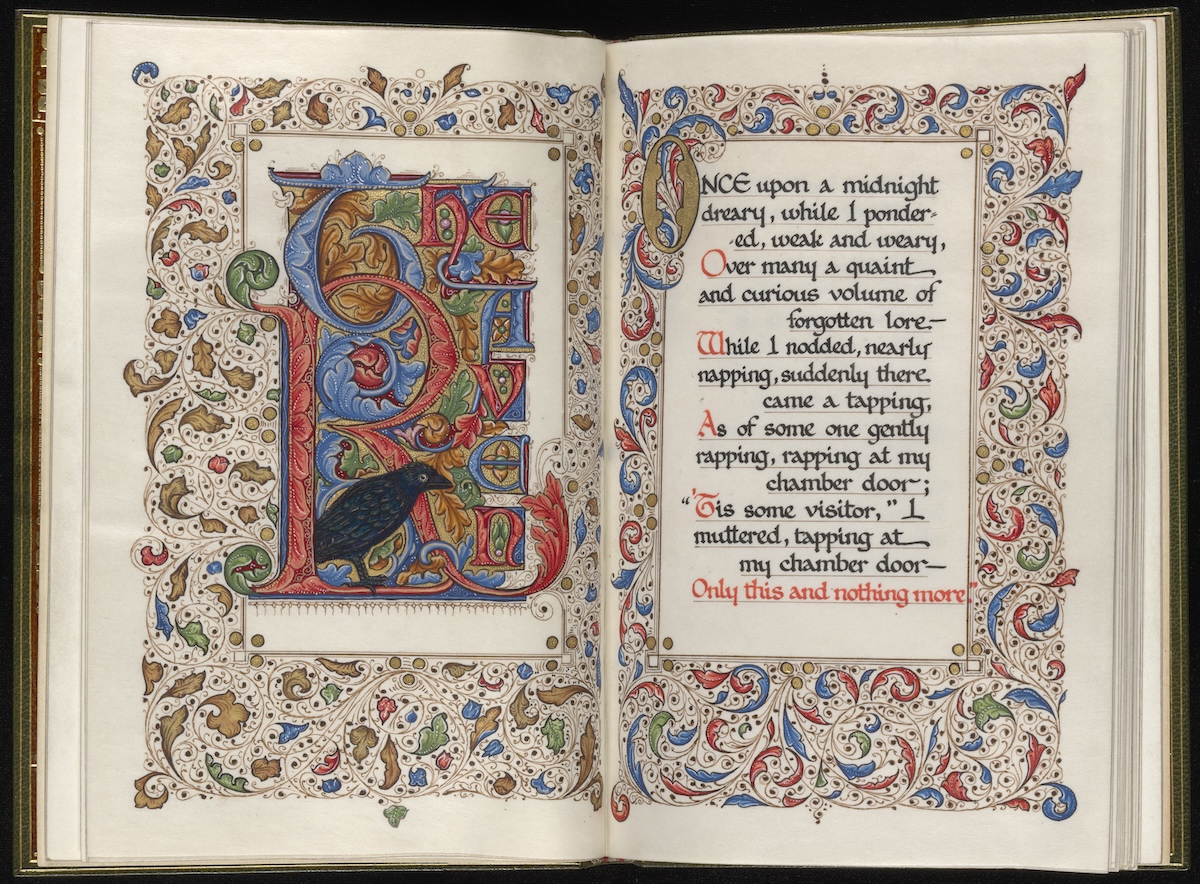
Ornamenting Poe: Illustrations of The Raven
Illustrator W.A. Dwiggins, when tasked with illustrating a version of Edgar Allan Poe’s Tales of Mystery and Imagination in 1930, was daunted by the assignment:
“I knew that it was foolish to try to ornament Poe. Nobody could hope to make pictures rich enough in weave to stand up beside the intricate embroidery of the text.”
Though Dwiggins felt nobody could, countless have tried. Special Collections boasts an extensive list of illustrated works of Poe, but perhaps the most consistently illustrated work is—unsurprisingly—The Raven.
Published neither on a midnight dreary nor in bleak December, The Raven is one of the most widely known and beloved works of Edgar Allan Poe, if not one of the most widely known poems in the English language. Since its publication only four years before his death in 1849, the poem secured Poe’s position in the history of gothic horror as one of the great masters of the genre—and ravens are today nearly synonymous with Poe’s name and gothic horror itself.
Illustrating The Raven: A Guide to Our Collection
The Rare Books Collections at Washington University is home to at least nine illustrated versions of The Raven, spanning a century of work from the 1880s to the 1980s.
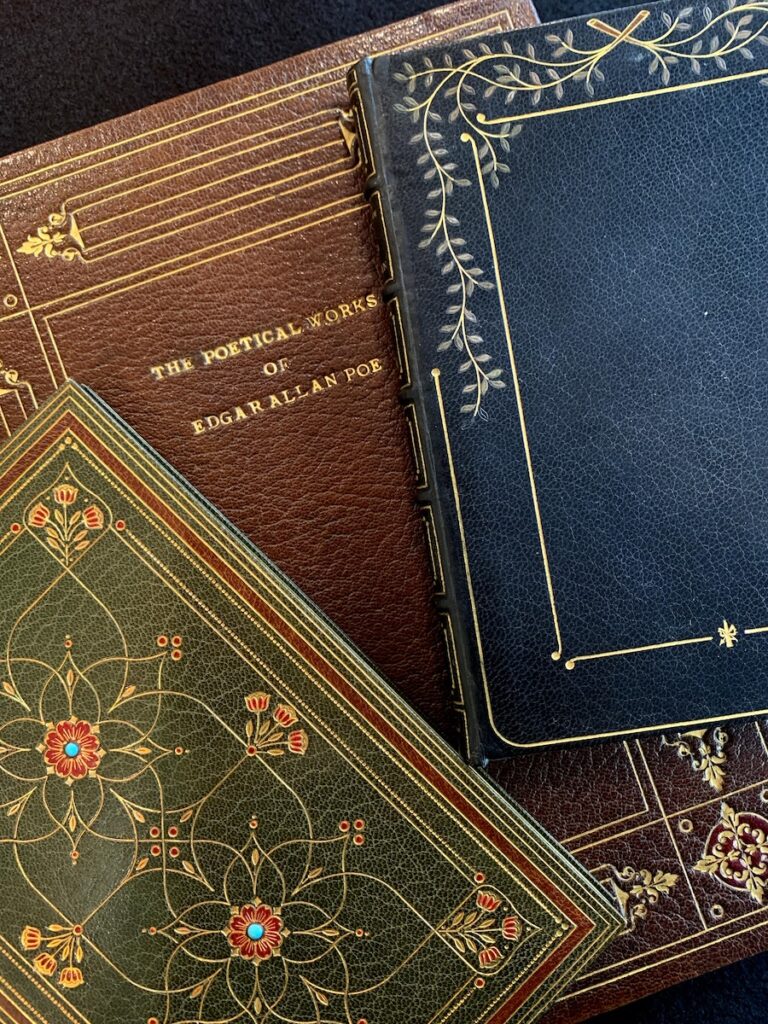
Three of these illustrated editions can be found in the George N. Meissner Collection: a recently conserved first edition of The Raven and Other Poems containing an original watercolor frontispiece by Belgian painter Louis Titz (1859-1932), an illuminated manuscript edition in a jeweled binding by Sangorski and Sutcliffe, and a 1921 edition of The Poetical Works of Edgar Allan Poe featuring several of Poe’s poems with selected works illustrated by Edmund Dulac (1882–1953). The Meissner Collection is perhaps best known for housing gorgeously bound and illustrated books, and these three editions are no exception.
Our first edition contains the original pages published in 1845 but has been re-bound in black leather adorned with elegant gold ornaments, marbled endpapers, and intricate leather mosaics adorning both inside covers. The added illustrated frontispiece, very possibly commissioned specifically for this copy, depicts the tortured narrator looking on in horror as the feathered antagonist swoops into his study to deliver its cryptic message.
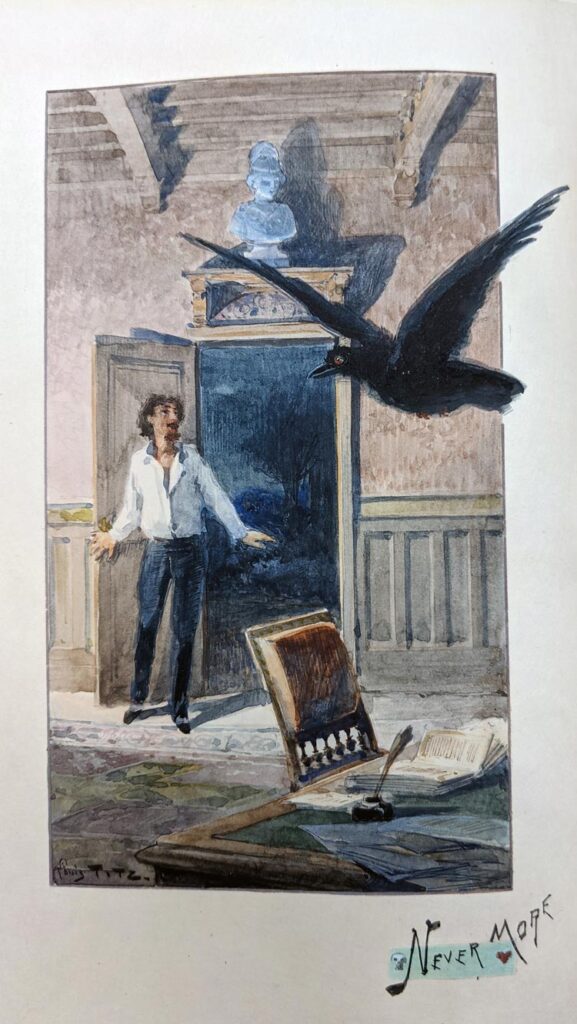
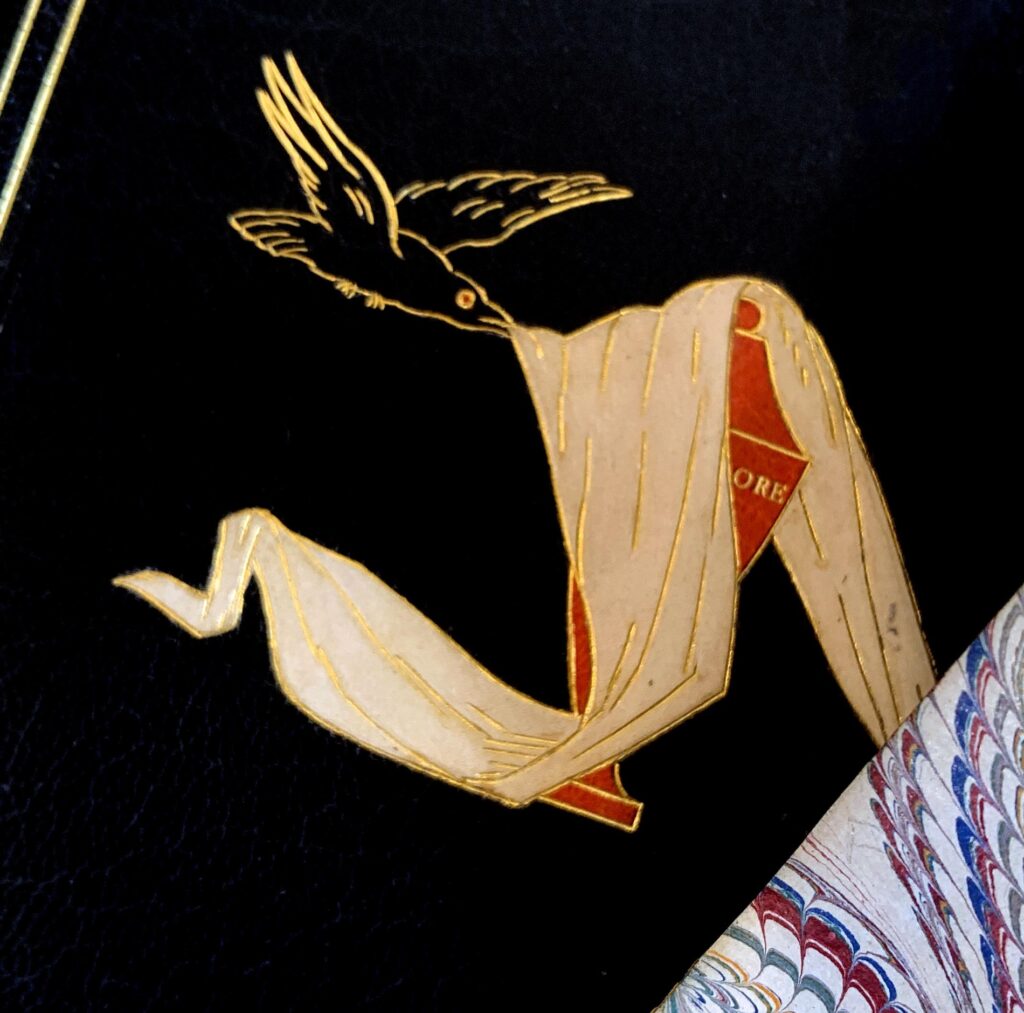
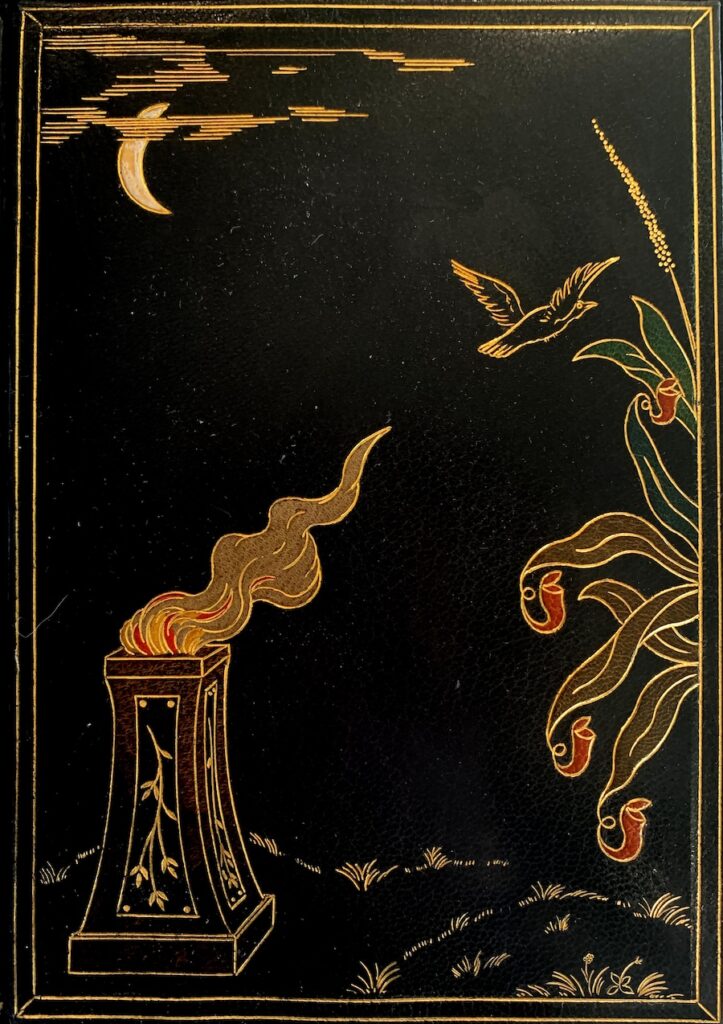
The illuminated manuscript edition takes ornamentation to a new level. Bound in leather with inlaid turquoise by London-based luxury binding firm Sangorski & Sutcliffe sometime between 1910 and 1932, this volume was most likely commissioned by a wealthy collector. Though only one lone image of a raven appears in this volume, it lacks nothing in ornament. The entire first spread of the poem is intricately illustrated and decorated with gold, with consecutive pages including full-color decorative drop caps and hand-calligraphed text.
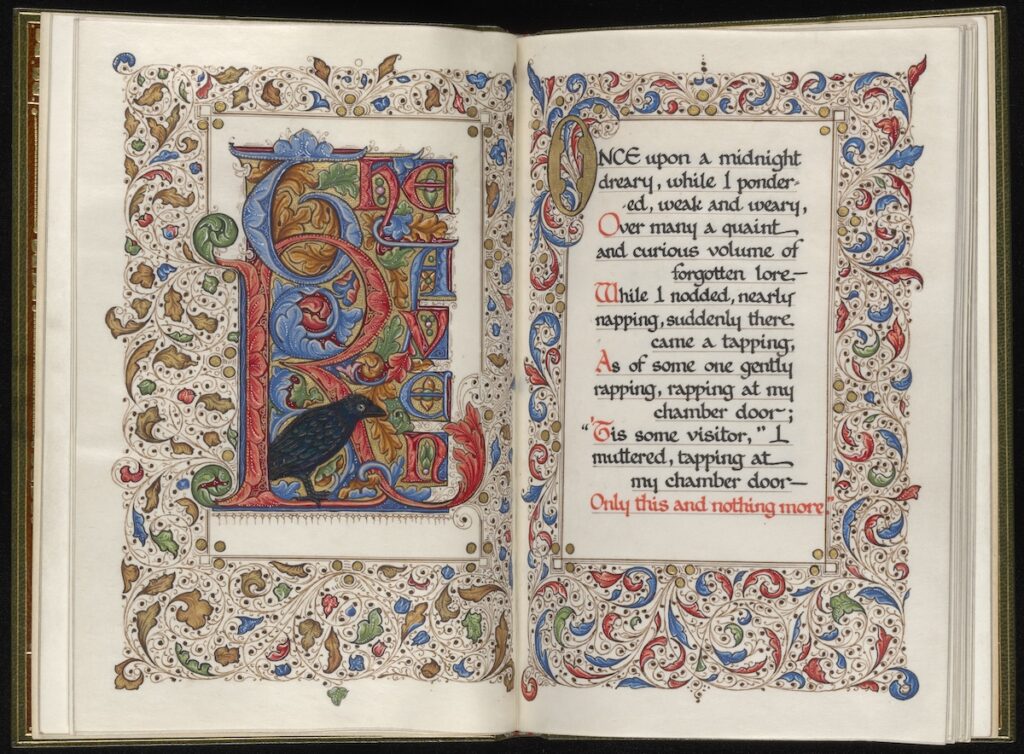
The Dulac illustrations for The Raven include a small decorative spot illustration of the infamous bird and a full-page, full-color illustration depicting the moments before our narrator notices the unwelcome guest in his study, of which only the tail feathers are visible in the upper right-hand corner of the image. Unlike the other editions in the Meissner Collection, this volume also includes a number of illustrations for other poems of Poe.
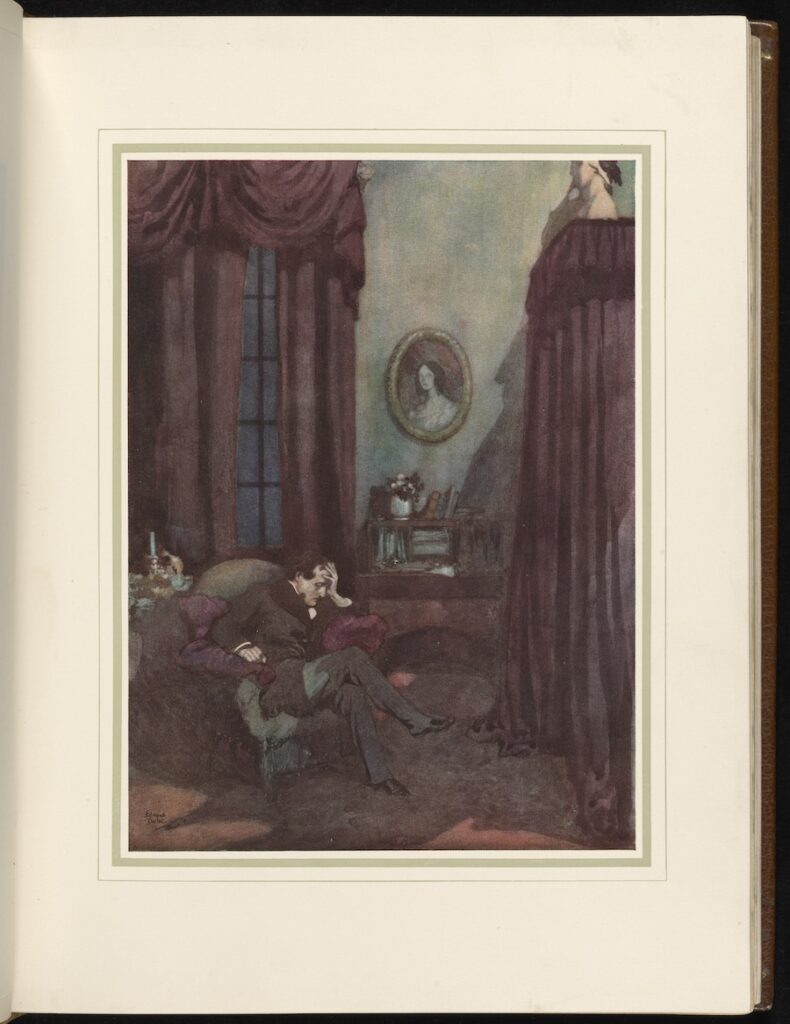
The most recent addition to our illustrated collection of The Raven came just this January: The Raven; Annabel Lee & The Bells with drawings by John Rea Neill. Known best for his illustrations of The Wizard of Oz, Neill’s two-color illustrations of The Raven include spot illustrations, full-page illustrations, decorative borders, and striking endpapers. While The Raven is the main focus of this 1910 edition, The Bells and Annabel Lee are similarly illustrated, with Poe’s famous essay “The Philosophy of Composition” also included alongside the three poems. No two illustrations within feel exactly alike, as Neill varied his images to fit the specific mood of each passage, making this a refreshing read with haunting and beautiful—if sometimes quiet and simplistic—teal and black visuals.
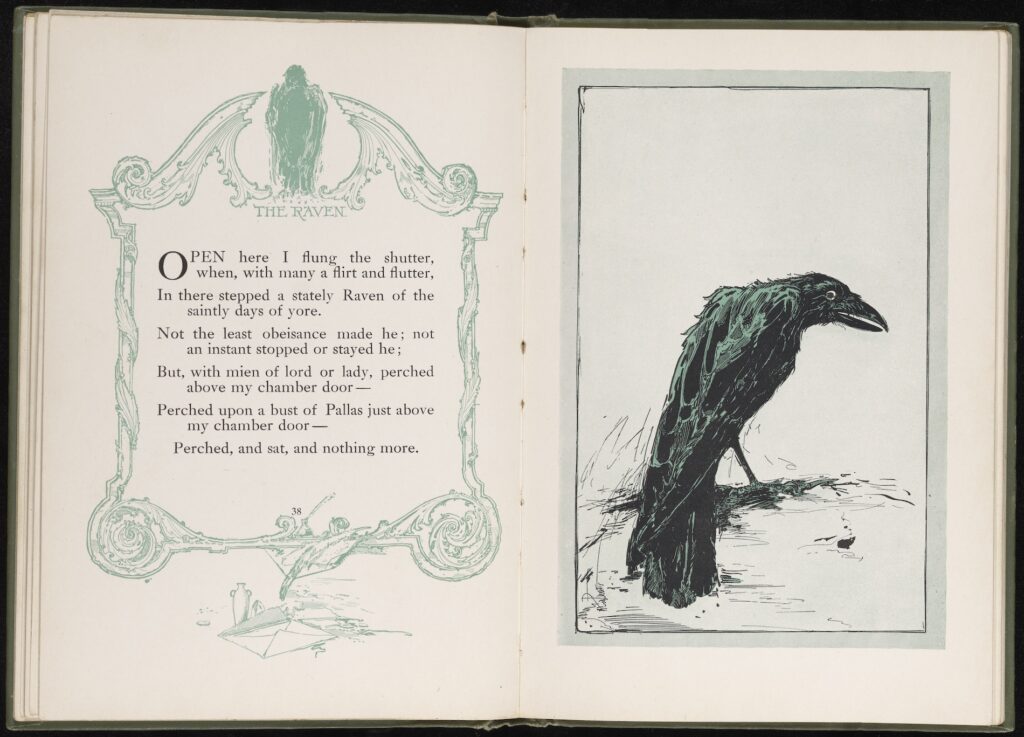
Our most contemporary editions, coupled with “The Philosophy of Composition,” are illustrated with woodcuts by Alan James Robinson as originally printed in 1986. Three versions containing Robinson’s woodcuts can be found in special collections: a 1996 paperback edition, a 1986 edition, and a limited special edition entirely re-designed by Robinson himself. The illustrations within each prominently feature up-close imagery of the face of the daunting raven, shifting the visual focus onto the bird itself.
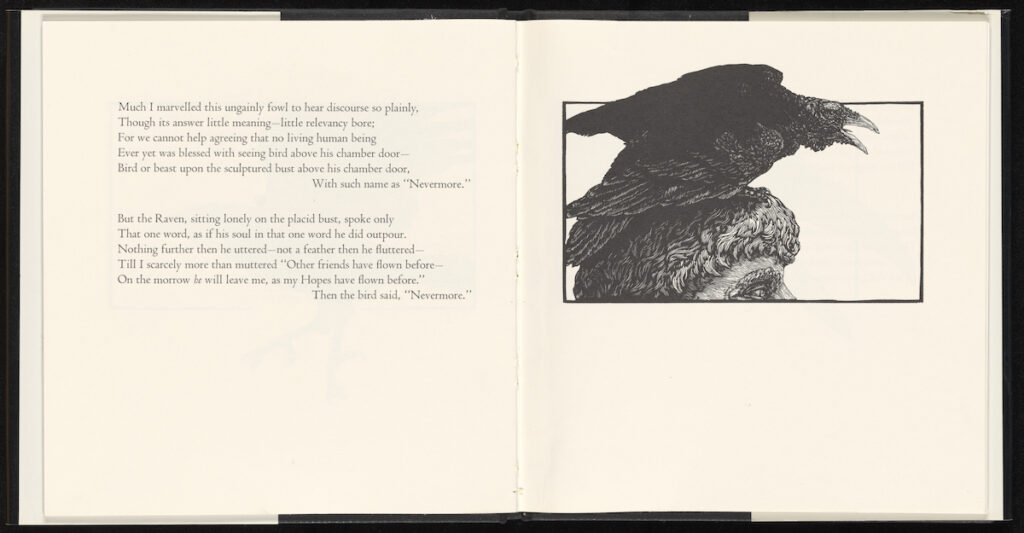
Of the versions within special collections, the largest—and, one may argue, the most visceral of the collection—is the version famously illustrated by Gustav Doré in 1884. Doré is best known for his illustrations of classics such as Dante’s Divine Comedy, but his take on The Raven established him as one of the most prolific illustrators of Poe’s work. His massive, intricate etchings illustrate the explicit action of the poem and visualize the narrator’s descent into madness—haunted not only by the pesky bird but by striking visions of his long-lost Lenore.
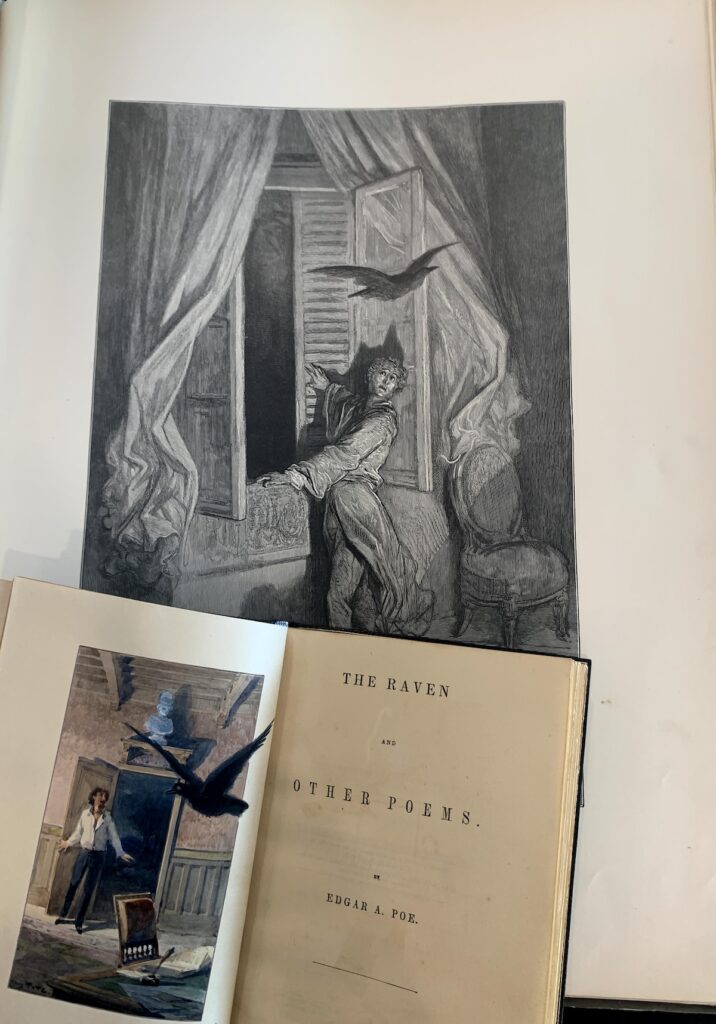
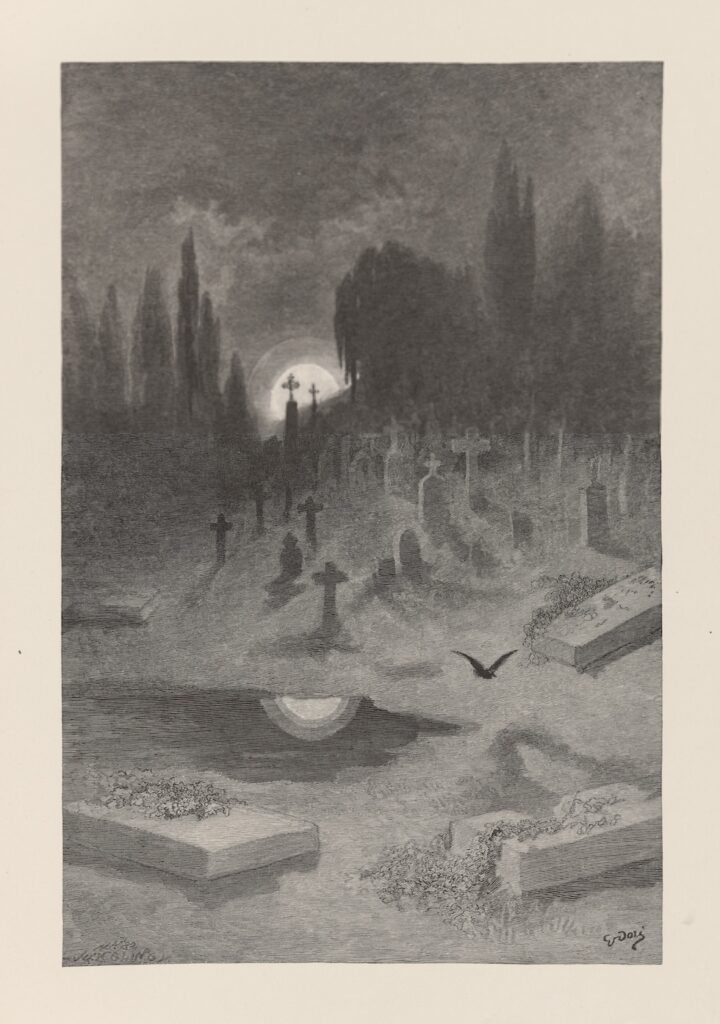
Our final illustrated version of The Raven was done in print and decorated by Robert H. Perdue in 1902. Perdue’s version includes border illustrations and duplications in reddish-brown ink on the guard papers between pages. The introduction of this edition by Joseph Leon Gobielle even not-so-honorably mentions other editions: “Mr. Perdue drew his borders as Fancy and Imagination dictated, and incidentally answered some questions which were not truly met by Doré, or any other of our poet’s distinguished illustrators.” Perdue does, in his rendition, include an often-depicted shadow of the raven thrown across the floor of the narrator’s study, but incorporates—according to Gobielle—more realistic lighting to feasibly cast said ominous shadow.
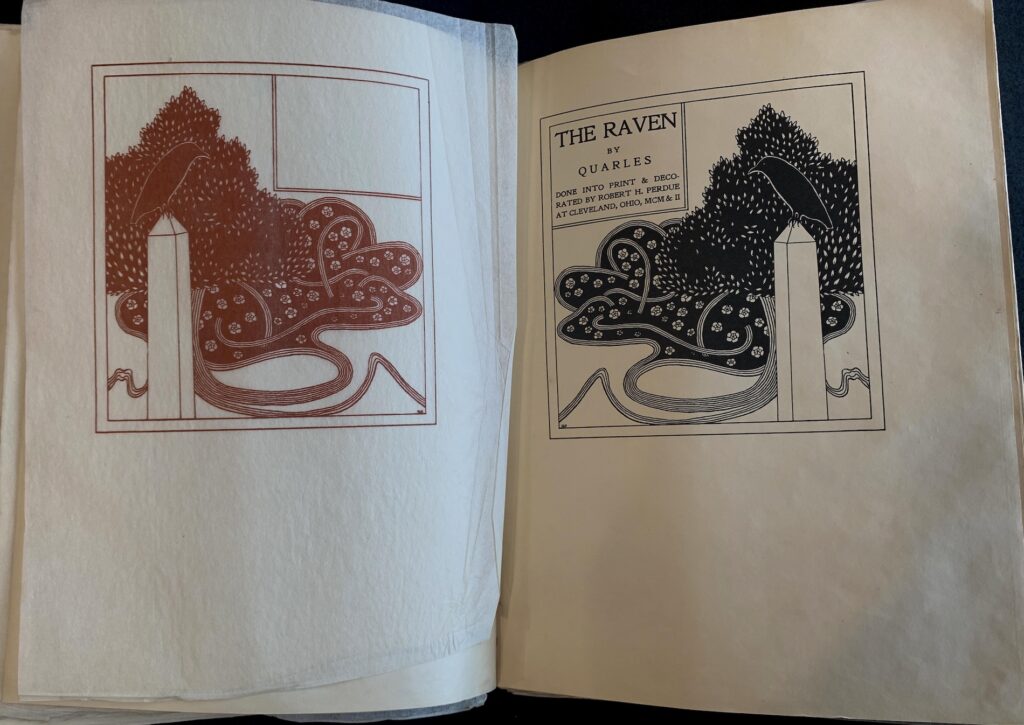
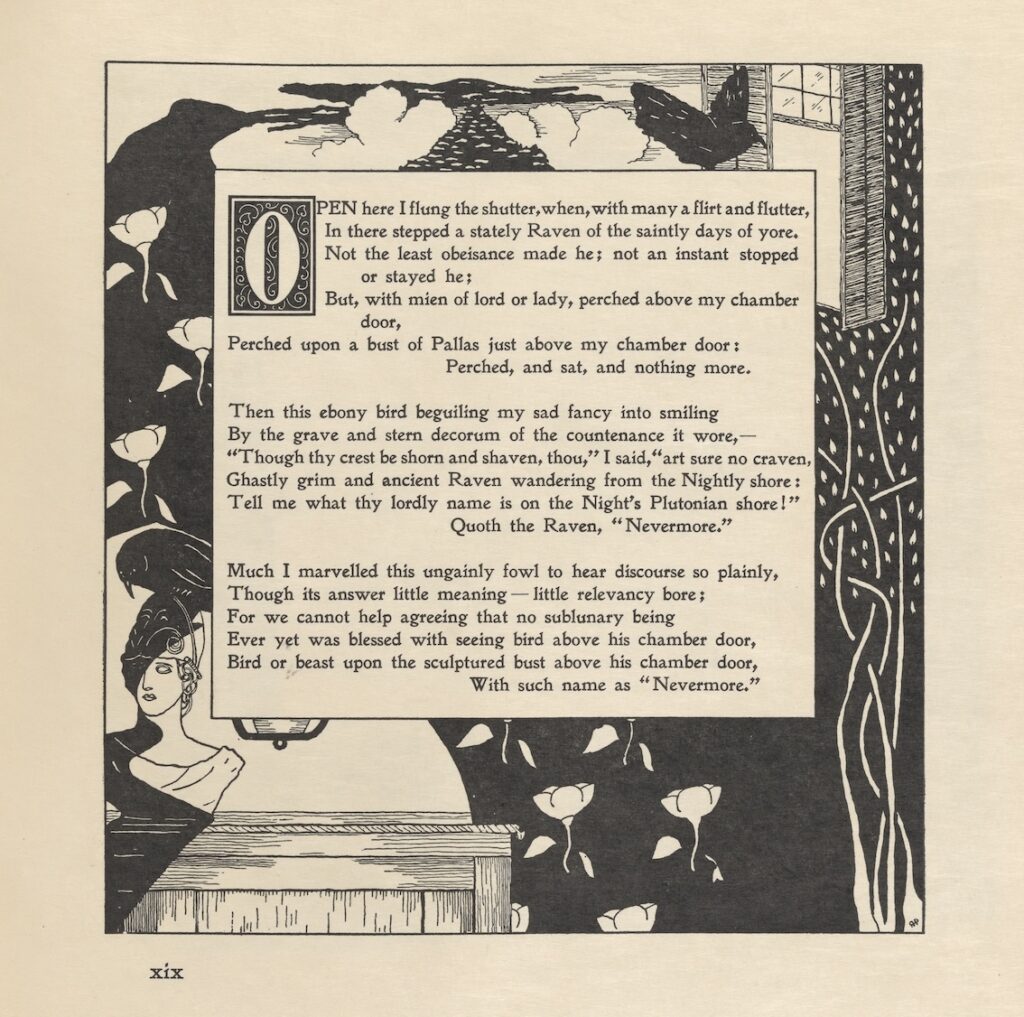
On Display
While Gobielle clearly has strong feelings regarding Perdue’s prowess in illustrating the beloved poem, readers are encouraged to view these works and pick their own favorites.
Many of the illustrated editions of The Raven mentioned in this article will be on display until September 8, 2024, within “The Raven Still Beguiling: The Visual Evolution of Poe’s Most (In) Famous Work,” as part of the MFA-IVC graduate student group exhibition, Re-Drawn: Pictures, Plots & Portrayals from Special Collections.
After the exhibit, the books will be available for research in Special Collections. For more information, contact the curator of rare books Cassie Brand.
Find more copies of The Raven in our catalog.
Charlie Hoppe is an MFA Illustration and Visual Culture candidate at The Sam Fox School of Design & Visual Arts and serves as a Rare Books Outreach Fellow in the Julian Edison Department of Special Collections.
